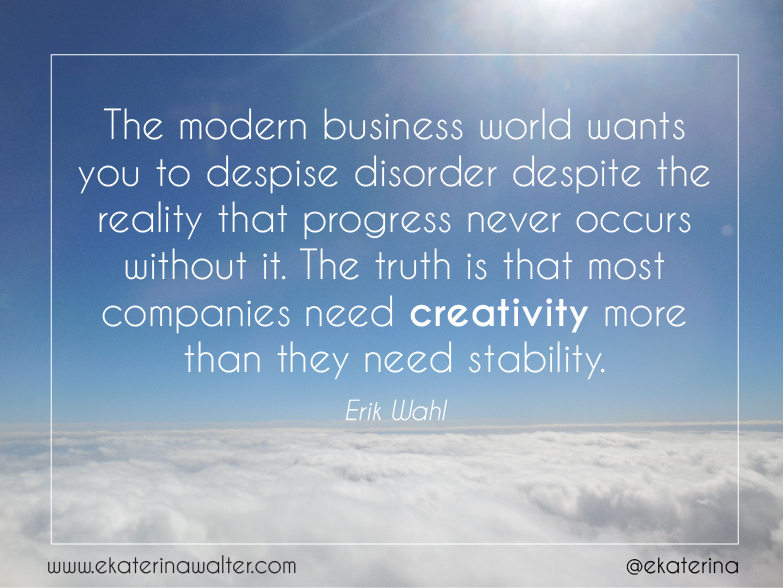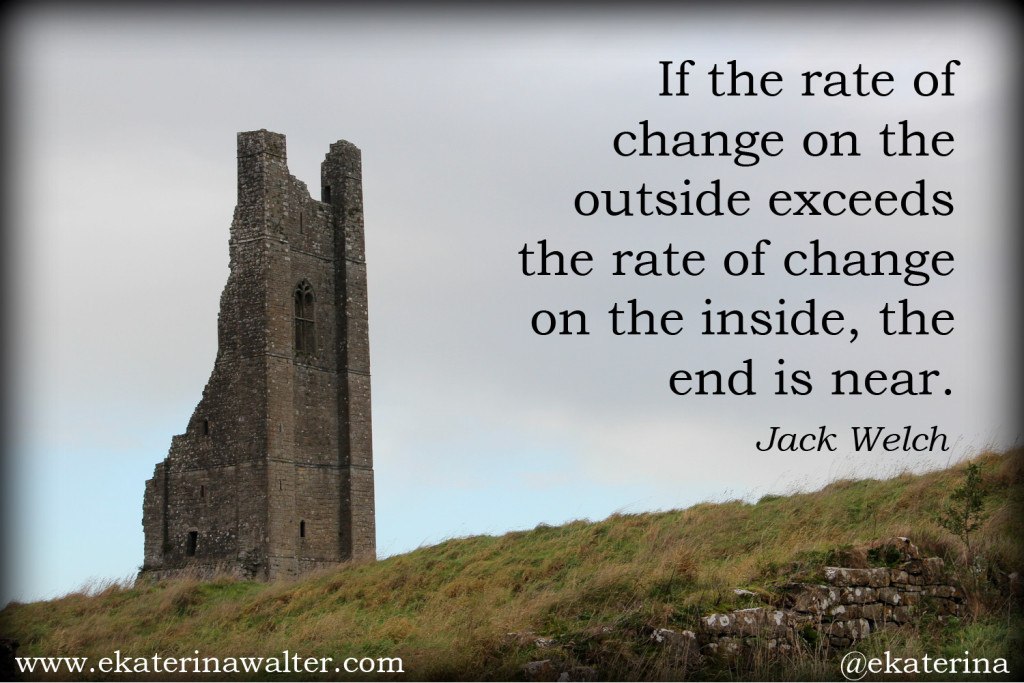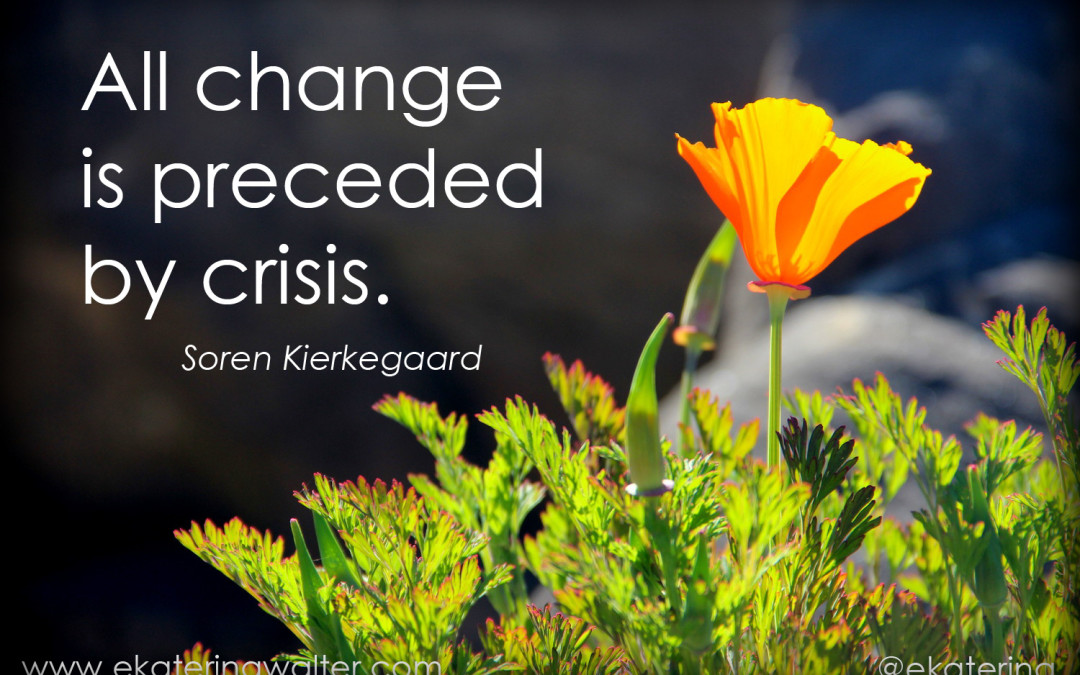By definition chaos is the enemy of structured lives we all yearn to live. It is the enemy of growing business, we are taught. We tend to avoid or contain chaos as much as possible.
But what if chaos, contained chaos, was actually a good thing? What if it actually helped us be more effective, more innovative?
In their book “The Chaos Imperative: How Chance and Disruption Increase Innovation Effectiveness and Success” Ori Brafman and Judah Pollack argue that we should proactively seek to avoid the tyranny of structure in order to inspire creativity and fuel business growth.
I couldn’t agree more. Chaos creates urgency, and, with it, an invaluable opportunity for us to redefine success and question our current structures, it forces us to seek an unusual and diverse perspective, and it pushes us out of the comfort zone and creates white spaces to imagine something potentially breath-taking.
Our structured existence is what gets us in the rut of mundane, leading to inability to step away from every day and seek a break-through. Brafman and Pollack argue that some of the most disruptive innovations happened during times of need and in an environment of chaos. Obviously, they are not suggesting to keep your organization in the constant state of disorder and anarchy. But chaos tends to create white space which allows us to revolutionize.
“There is a paradox at the heart of chaos,” authors maintain. “For all the destructive power of the chaos, [for example], unleashed by the Black Plague [in Europe], it turned out to be the crucible in which the modern Western world was forged… It may seem magical and bizarre that the Renaissance came about so quickly after the plague.” But it wasn’t random or surprising, they say. It happens again and again throughout the history and within the organizations.
Changing up the routine in unusual ways may lead to some surprising results. Jason Fried, CEO of 37signals, announced one day that the entire company would take a month off from non-essential assigned work to see what the teams can do with no structured schedule whatsoever. It was an exercise in productivity, a test of sorts. At first employees were uncomfortable, they were unsure what to do with such long stretch of uninterrupted time. But soon after, Fried said, people started to come up with amazing ideas: “a new way to sell one of our products, a better way to keep our customers informed, a fresh take on surprising customers with better service, and a better way to introduce new employees to the rest of the company. I was blown away by the creativity, polish, and execution.” Now, if you ask me, a month was a little much, but there is no reason why leaders can’t spice things up in the workplace to provide employees with the opportunity to do things differently.
Brafman and Pollack state that “to the surprise of neuroscientists, there appears to be a whole area of the brain that flourishes when we let a bit of chaos into our lives. It’s what allows us to solve problems in a novel way.”

In his great book “Unthink: Rediscover Your Creative Genius” Erik Wahl talks about Honda, its founder Soichiro Honda, and his approach of “purposeful provocation” to inspire change and progress.
Honda experienced numerous crises and setbacks in its early years from factory being destroyed by fire, to the supplies being rationed during wartime, to designs failing during production. “After a while Honda began to note how each crisis improved the eventual outcome,” says Wahl. “Ironically, the trials often sharpened his workers and left his company with better results than if everything had gone as scripted. For example, it took a steel shortage for him to discover that aluminum not only made lighter engine blocks but also dissipated heat better. A design failure that seemed catastrophic turned out to be the doorway to a landmark innovation.”
Over time Honda’s founder implemented a management practice that became known as “kick out the ladder.” For example, just as a team neared completion on a project, he would create a crisis that threatened the success of the project or shorten the deadline. The teams “stopped relying on ‘what we’ve done before’ and shifted into a hyper-creative gear. Their resulting work improved,” says Wahl.
The sense of urgency is critical to an organization. In my book “Think Like Zuck” I talk about various ways Mark Zuckerberg has created (and maintained!) the culture of urgency and innovation. Hosting regular hackathons is just one of them. Facebook holds hackathons, a gathering of Facebook’s engineers where they are encouraged to work on anything but what they work on in their daily jobs. These all-nighters, where engineers partner with each other to execute on their own ideas of how to improve the product, produced some of the most valuable features of Facebook: NewsFeed, Timeline, chat, etc.

So, as a leader, don’t wait to be provoked or be forced into innovation. Create change internally and provide an environment for your teams – your artists – to create. After all, in the words of Erik Wahl (a businessman turned artist): “Artists don’t wait to be rattled only from the outside. They provoke themselves first, and then the people around them, in order to constantly imagine new possibilities. The instigate change even when it doesn’t seem necessary.”
And that’s exactly what your organization… any organization … needs!
Originally posted in Forbes

